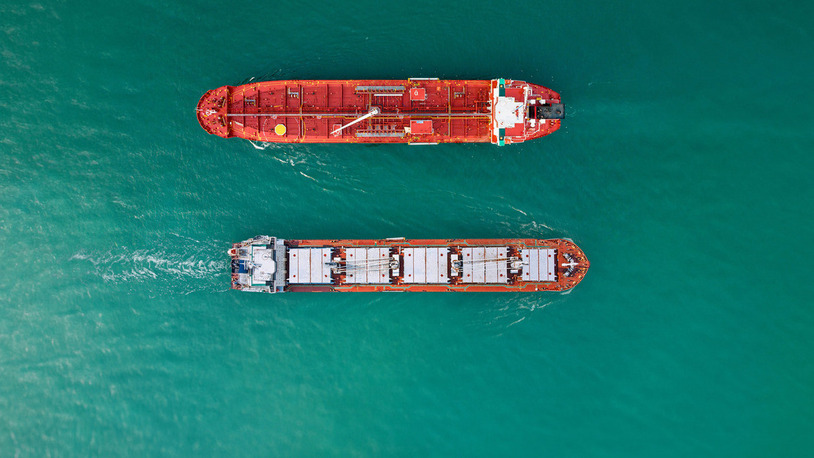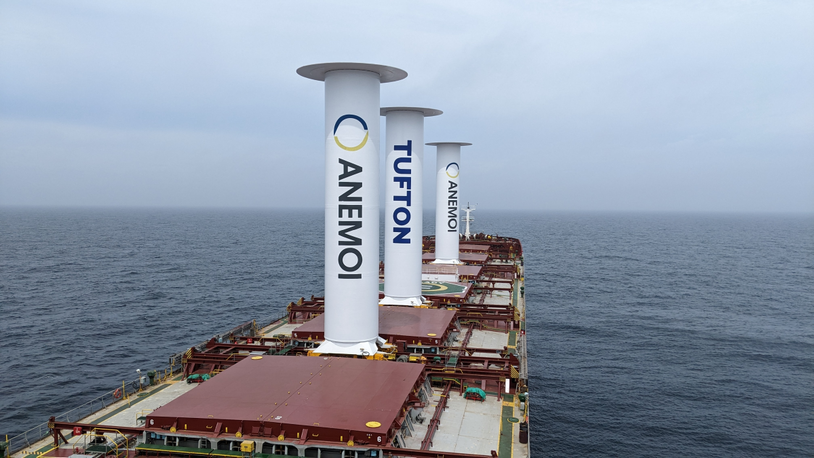Business Sectors
Contents
Register to read more articles.
IWSA: wind-powered cargo capacity surpasses 1M dwt
Wind propulsion installed on large commercial vessels now represents more than 1M dwt of cargo-carrying capacity, according to the International Windship Association (IWSA)
This week, China Classification Society announced the delivery of the first Chinese-built VLCC sporting four 40-m rigid wing sails. The installation aboard the 307,000-dwt tanker is the latest boost for wind propulsion after dry bulk owner Berge Bulk agreed to install two vessels with rotor sails from UK-based Anemoi Marine Technologies.
Japan’s MOL Group is examining the feasibility of adopting Anemoi’s rotor sails, and elsewhere, Lloyd’s Register has granted an AiP to Smart Green Shipping, another sail developer, for its FastRig wing sail technology system.
Meanwhile, shipbuilding heavyweights Daewoo and Hyundai are developing wind-assisted propulsion systems, with Hyundai Heavy Industries eyeing commercialisation soon.
Commenting on these developments, IWSA said, “What was once romanticised as a historic way to sail cargo across the world’s oceans has become a credible option for modern vessels, fuelled by incoming carbon reduction targets and high fuel prices.”
According to IWSA, 21 large commercial vessels have wind propulsion systems installed on board, representing over 1M dwt of cargo-carrying capacity. And that figure will rise to 25 vessels by the end of the year.
Ten small cruise ships currently use traditional soft-sail technology, representing a further 50,000 gt, and IWSA said it expects the number of small vessels using wind propulsion to grow in the next year as more vessels are converted to sail.
Although wind power only helps shave a small percentage (between 5-10%) of fuel use and emissions, IWSA Secretary General Gavin Allwright believes, “The savings potential is even higher for vessels that use primary wind technologies to achieve much higher levels of propulsive energy sourced from wind.”
More crucially, Mr Allwright said an increase in industry uptake will help bring the price of wind propulsion down.
“With 50 wind propulsion system rigs installed to-date on those 21 ships, and an anticipated 100 rigs installed milestone to be passed by the end of 2023, the price of propulsion technology is coming down. Reaching the 100 rigs installed milestone will represent an important market marker for wind propulsion technology in particular. At this point, we can expect a sustained reduction in return-on-investment timeframes, especially if fuel prices remain high.”
Based on public announcements and shipyard orders made to-date, IWSA estimates that by the end of 2023, up to 50 large ships will use wind as a renewable energy source with a combined tonnage of over 3M dwt.
Riviera Maritime Media has a comprehensive conference programme for the rest of 2022 and will provide free technical and operational webinars in 2023. Sign up to attend on our events page
Related to this Story
IMO’s net-zero plan poised to pressure ageing fleet with rising costs
Events
TUGTECHNOLOGY '25
Reefer container market outlook: Trade disruption, demand shifts & the role of technology
Asia Maritime & Offshore Webinar Week 2025
Marine Lubricants Webinar Week 2025
© 2024 Riviera Maritime Media Ltd.














